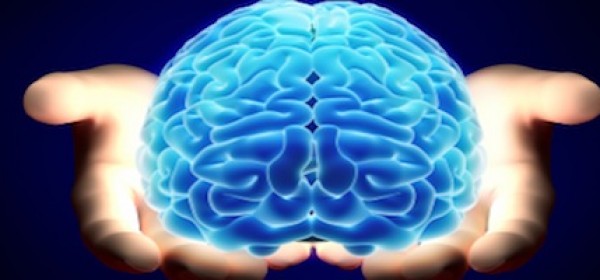We spend a lot of time with clients answering how should I consequate a child, adult dependent or even a loved one’s behavior. We operate from a behavioral premise, but we view that premise through the lenses of diagnoses, history of trauma and neglect, and experience. This means that a consequence that would seem to be warranted, may not only not have the predicted outcome, but may be counterproductive when one accounts for the respondent’s (child, adult dependent, etc) brain.
Just this morning I was working with a family of a child whose behavior was out-of-control. The child was born after her mother abused alcohol while pregnant, the child was adopted from a foreign country, spent her early history in an orphanage, was raised in a family that did not have the tools for supporting such a child and consequently this family system produced a child with such serious behavioral dysregulation that she is currently living out-of-home. The parents are exhausted with her after just hours of visitation. They are still trying to use tactics that were designed for someone with a neurotypical brain; this young lady does not have that brain.
As we began to perform a psychological autopsy on their approach, both mom and dad began to see how their approach resulted in both more problems, more struggles and more dysregulation between them and their daughter. They had been using what we refer to as “typical parenting” approaches when this girl needed a modified approach. By the end of the session, the parents were already beginning to see their daughter anew.
Just this weekend, our favorite neuroscientist, Robert Sapolsky penned an OpEd with regarding how neuroscience is helping judges “re-frame” criminal behavior.
If abnormal behavior is the product of an abnormal brain, how should it be punished?
Scientists and social scientists tend to avoid one another. But when they pool their expertise, things can get interesting. One case in point is the growing collaboration between neuroscience and criminology.
This new field (currently referred to by the unfortunate name of “neurolaw”) is premised on a crucial fact: abnormal behavior is the product of an abnormal brain, and thus if you are going to make an informed judgment about the former (especially in the context of the criminal justice system), you’d better know something about the latter. A recent fascinating paper presents a heartening advance in this young field.
Writing in the journal Science, Lisa Aspinwall and colleagues at the University of Utah examined the effects of neurobiological knowledge on sentencing decisions of judges. In the study, 181 judges were told about a hypothetical case (based on fact) involving a man convicted of an appalling violent crime; the judges were asked to decide on a prison term for him.
The information they were given came in two versions. One group of judges was told that the man had been diagnosed by a variety of experts as an incurable “psychopath” — a psychiatric label describing a certain kind of predator who has a reptilian, remorseless indifference to the suffering of others. The second group was given that same information plus information about what specifically scientists had found when they studied the man’s brain.
The brain studies turned up two aberrant things in the hypothetical criminal: “atypical function” of a brain region called the amygdala, and abnormally low activity of a brain enzyme called MAO-alpha. This wasn’t just make-believe science. Both abnormalities have been implicated by neuroscientists as playing a role in aggression, and both have been cited in court during criminal trials (although at this point the science isn’t remotely advanced enough to accurately predict violent behavior from examining amygdaloid function or MAO-alpha activity).
Introducing neurological information like this could potentially generate two very different subtexts. The first one is tailor-made for a prosecutor: “The guy’s brain is broken and no one can repair it, which means he is a continued threat and must be isolated from society.” The other is defense-friendly: “The guy’s brain is broken; how can you hold him criminally responsible for behavior he cannot control?”
Recognizing the potential for these divergent reactions, the scientists designed their experiment so that half the judges were told that the information about the amygdala and MAO-alpha had been presented in the trial by the prosecution, and the other half were told the defense had introduced it.
The study produced a variety of findings. For example, judges were asked whether, in the process of deciding on sentencing, they took into account any “aggravating factors” (such as lack of remorse on the man’s part) that had caused them to lengthen the sentence. Being informed that the criminal had something wrong with a part of his brain and with his brain chemistry, whether presented by the prosecution or defense, caused a small increase in the percentage of judges who perceived aggravating factors.
Something much more dramatic emerged when judges were asked whether they considered any “mitigating factors” (such as mental illness or lack of control on the man’s part) that led them to shorten the sentence. When the brain information came from the prosecution, there was no effect on the percentage of judges who cited mitigating factors in their decisions (roughly 30%). But when the information was presented by the defense, it more than doubled the percentage of those citing mitigating factors. In other words, the news that the criminal had something wrong with his brain had different effects on the judges depending on whether the news was presented by the prosecution or the defense.
As would thus be expected, hearing about brain abnormalities from the defense led to shorter recommended sentences. But along with that came a truly puzzling finding. Even though judges who were told that the information about the amygdala and MAO-alpha came from the prosecution were less likely to say they were influenced by mitigating factors; those judges still shortened sentences just as much.
The differences weren’t huge. Without the neurological information, the average sentence was 13.9 years; with it, 12.8, a mere 8% decrease. But lurking in the study was a truly important finding, a profound one, one that was largely ignored in media reports. When neuroscientific evidence of brain anomalies was introduced, judges were three times more likely to cite both aggravating and mitigating factors — but only when they were told the evidence had been introduced by the defense.
In other words, they grasped that the information was important and necessary to consider when facing the daunting task of making the punishment fit the crime. And they understood the nuance: that even if a crime was rooted in biology and the perpetrator might have committed acts he could not control, he is no less dangerous to society. It made judges more reflective; it made them think harder about the complexities.
We can wish that the judges would have grasped the nuance regardless of which side presented the evidence. But still, as a neuroscientist, I consider the findings an important achievement for my profession.
Robert M. Sapolsky is a professor of neuroscience at Stanford University and the author of “A Primate’s Memoir,” among other books. He is a contributing writer to Opinion.








